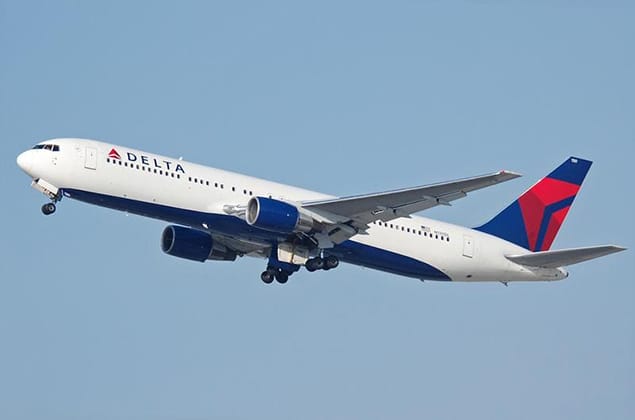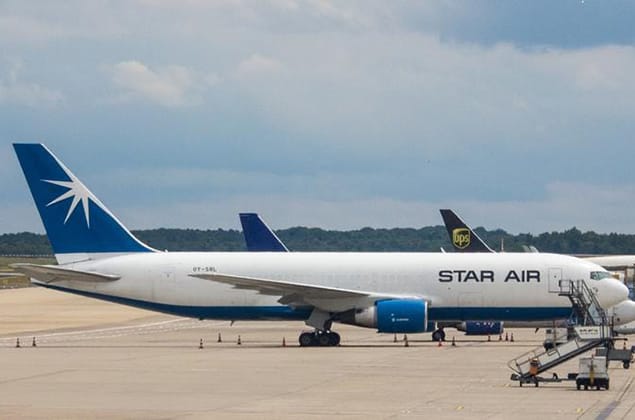Boeing 767-200 Specifications & Booking
Overview of the Boeing 767-200
The Boeing 767-200 is a commercial airliner manufactured by Boeing Commercial Airplanes. It is a narrow-body, twin-engine jet with a primary purpose of transporting passengers and cargo over medium to long-range routes. The aircraft made its first flight on September 26, 1981, and was certified for commercial use in June 1983.
Technical Specifications
The Boeing 767-200 has the following technical specifications:
- Dimensions: Length: 152 feet 7 inches (46.5 meters), Wingspan: 156 feet 1 inch (47.6 meters), Height: 51 feet 9 inches (15.8 meters)
- Weight: Empty weight: approximately 155,000 pounds (70,300 kilograms), Maximum takeoff weight: approximately 315,000 pounds (142,600 kilograms)
- Engines: Two General Electric CF6-80C2 or Pratt & Whitney JT8D-213 high-bypass turbofan engines, each producing up to 52,500 pounds-force (233.5 kilonewtons) of thrust
- Performance: Maximum speed: Mach 0.82 (647 mph or 1,041 km/h), Range: approximately 6,350 nautical miles (11,760 kilometers), Cruising altitude: up to 39,000 feet (11,887 meters)
- Capacity: Passengers: up to 234 in a typical three-class configuration, Cargo: approximately 55,000 pounds (24,950 kilograms) or 8,400 cubic feet (239.5 cubic meters)
Design and Features
The Boeing 767-200 features a distinctive fuselage design with a high-mounted wing and a long, narrow nose section. It also has a unique aerodynamic shape that reduces drag and improves fuel efficiency. The aircraft was praised for its innovative design, which earned it several awards and recognitions.
History and Development
The Boeing 767-200 was developed in the late 1970s as a response to growing demand for efficient and reliable narrow-body airliners. The aircraft's development was marked by significant milestones, including its first flight on September 26, 1981, and certification in June 1983.
- Key milestones: First flight: September 26, 1981; Certification: June 1983; Entry into service: October 1982
- Challenges faced during development: Designing a reliable and efficient narrow-body airliner that could meet growing passenger demand while minimizing operating costs
- Significant upgrades or variants: Boeing introduced several upgrades and variants, including the 767-200ER (Extended Range) and the 767-300ER, which featured improved engines and increased range capabilities
Operational Use
The Boeing 767-200 has been used by numerous airlines and organizations around the world. Some notable operators include:
- Airlines: Delta Air Lines, United Airlines, American Airlines, Lufthansa, KLM Royal Dutch Airlines, and many others
- Military operations: The US military has used the 767-200 for transport and logistics missions, including humanitarian aid delivery and troop movement
- Role in aviation history: The Boeing 767-200 played a significant role in shaping the modern commercial airliner industry, offering improved efficiency, range, and passenger comfort
Interesting Facts
Here are three interesting facts about the Boeing 767-200:
- Famous flight: The 767-200 set a record for the longest non-stop transatlantic flight in 1987, flying from New York to London with 242 passengers
- Award-winning design: The Boeing 767-200 won several awards for its innovative design, including the prestigious 1983 "Air Transport World" magazine's "Aircraft of the Year" award
- Pop culture appearances: The 767-200 has appeared in various films and TV shows, such as "Airport '85," "The Rock," and "Lost"
Frequently Asked Questions
What makes the Boeing 767-200 unique?
The Boeing 767-200 is unique due to its innovative design, which includes a high-mounted wing, a long, narrow nose section, and improved aerodynamics. This design allows for increased fuel efficiency, reduced drag, and improved passenger comfort.
How much does the Boeing 767-200 cost?
The cost of the Boeing 767-200 can vary greatly depending on factors such as configuration, customization, and age. Newer models typically start at around $50 million, while older or used aircraft may be available for significantly less.
What is the range of the Boeing 767-200?
The Boeing 767-200 has a maximum range of approximately 6,350 nautical miles (11,760 kilometers), making it suitable for medium to long-range flights. However, its actual operating range will depend on factors such as payload capacity, fuel efficiency, and air traffic control requirements.
Is the Boeing 767-200 still in service?
Yes, many Boeing 767-200 aircraft are still in commercial or military service around the world. Although some have been retired or repurposed, others continue to operate as passenger or cargo carriers, or serve as transport and logistics vessels for various organizations.
Conclusion
The Boeing 767-200 was a pioneering narrow-body airliner that revolutionized commercial aviation in the 1980s. Its innovative design, improved efficiency, and range capabilities made it an attractive option for many airlines and organizations. Although some have been retired or repurposed, many Boeing 767-200 aircraft remain in service today, continuing to play a vital role in global air transportation networks.





